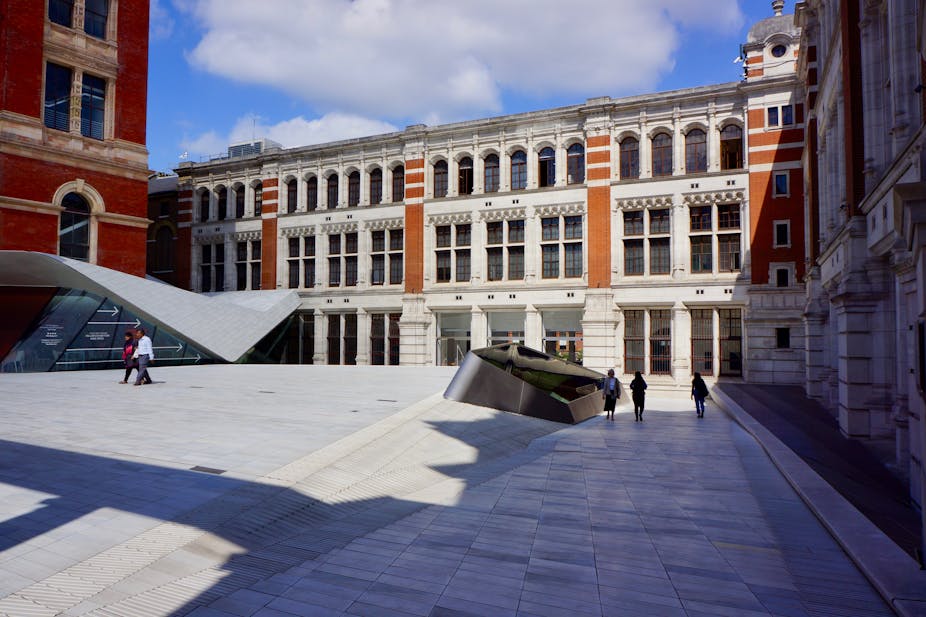Museums and galleries across the world are now turning away large amounts of philanthropic cash from the Sackler family – and there have been calls for some to give back money that’s already been accepted. It follows massive lawsuits against members of the wealthy Sacklers, accusing them of unlawfully profiting from the highly addictive painkiller OxyContin and fuelling the opioid crisis in the US.
The charitable Sackler Trust accepts that negative press has been “distracting” for the museums and galleries that have taken its money. But the family rejects the allegations made against it.
Sackler donations to cultural institutions have been numerous and varied. The Metropolitan Museum of Art in New York has a Sackler Wing and so does the Louvre in Paris. In London, there is a Sackler Gallery at the Serpentine and a brand new Sackler Courtyard at the V&A museum.

In the light of recent publicity, the Sackler Trust and Foundation have said that they will “pause” any new grants in the UK.
Stuck with the gifts
But there have inevitably been voices asking for more than just a pause. There have been high-profile demonstrations against galleries accepting Sackler donations.
Giving back donations has a real symbolic power. It is the ultimate rejection. It means declaring publicly that you want nothing to do with another person or organisation. But it is very unlikely that galleries and museums could ever wash their hands of Sackler money.
Even if anyone thought it was a good idea to put the money back into the personal hands of the Sacklers, there is a strict charity law rule called “perpetual dedication”, which means that charitable gifts must stay in charity for ever. This common sense position protects money earmarked for the public benefit.
It would also not normally be possible for cultural organisations to mount a protest by giving old donations back to the grant-making, charitable Sackler Trust either. Once charitable money is devoted to a particular charitable purpose – such as building a new gallery – funds stay linked to that purpose forever, unless the Charity Commission, which regulates UK charities, can be convinced the purpose itself has become outdated.
Worse for a gallery that wants to return a gift, the responsible trustees have a duty to act in the best interests of the organisation that they serve. And it will be a rare set of circumstances where that involves giving money away to make a moral point.
The was a similar situation in the UK in 2018, when money was donated to Great Ormond Street hospital following a controversial men-only fundraising dinner hosted by the Presidents Club charity. Allegations emerged of misogyny and groping at the high-profile event. After an undercover exposé in the Financial Times newspaper, the children’s hospital vowed to reject a gift it had already accepted.
Taking advice from the Charity Commission, however, Great Ormond Street did not in the end hand back the cash. Although the scandal may have been deemed so harmful to the reputation of the venerable hospital as to justify a return of funds, the commission was explicit that trustees should never give money away without first seeking its authorisation.
So it is clear that, outside of very special circumstances, a museum or gallery that wants to return a gift faces an uphill legal struggle.
Strings attached
It is ironic that museums and galleries – normally so hungry for cash – can be left stuck with gifts long after they have become embarrassed about them.
But in preventing donors from returning gifts, the law mirrors a wider ethical point. Philanthropy always comes with strings attached. And once in place, it can be very difficult for the recipient to cut free of them.
Donation is best understood as a two-way relationship. It is obvious that galleries and museums benefit from the type of new buildings and acquisitions that the Sackler Trust made possible. But donors also get something back when they give in the form of a reputation boost.
It can be difficult to get very rich and keep a good reputation. Whether it is selling unhealthy products, or employing a small army of low-paid staff, the very act of making money can be a dirty business.
For the mega-rich, philanthropy is often a way to manage their personal brand. So Mark Zuckerberg can point to his foundation, rather than privacy concerns at Facebook. Jeff Bezos might emphasise his money spent on homelessness, and not working conditions at Amazon warehouses. And the Sacklers might point to cultural philanthropy, in place of the OxyContin controversy.
But the enhanced reputation of a donor can come at a cost to the recipient. The prominent display of the Sackler name in museums and galleries has now become very noticeable. And in inhibiting the return of gifts, the law makes it very difficult for organisations to wash their hands of past connections.

